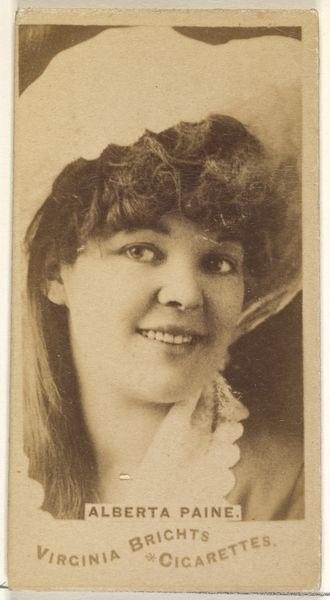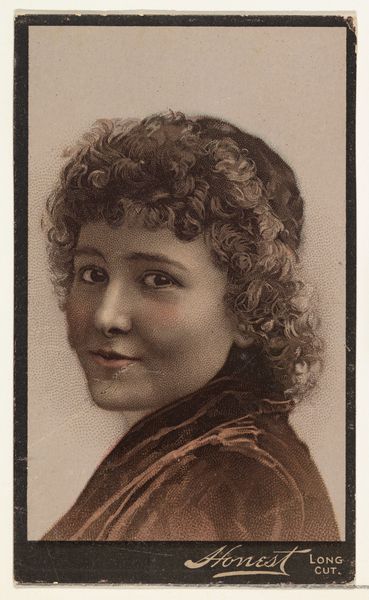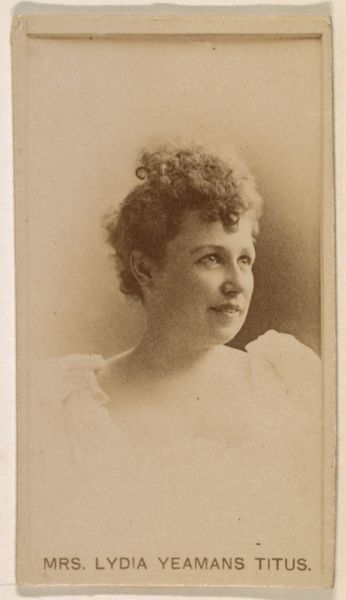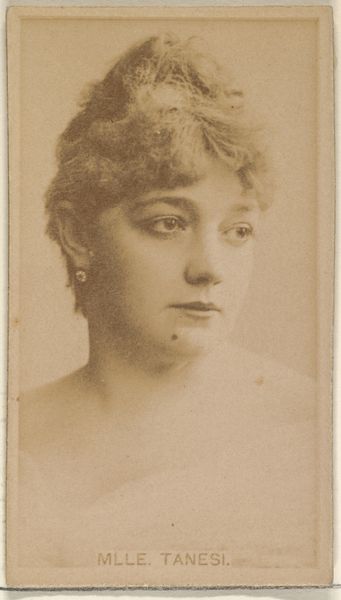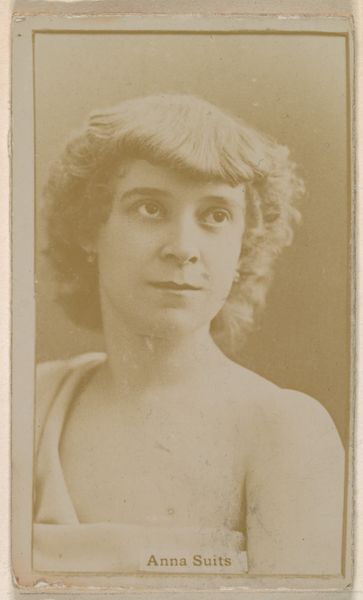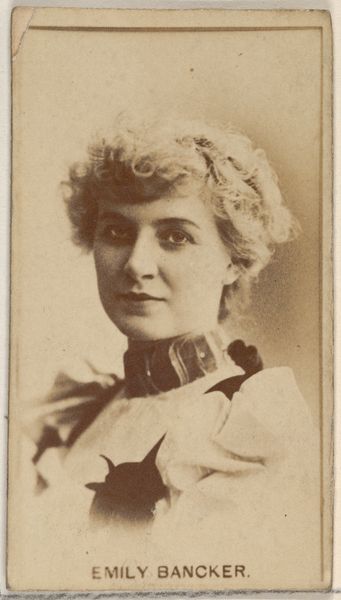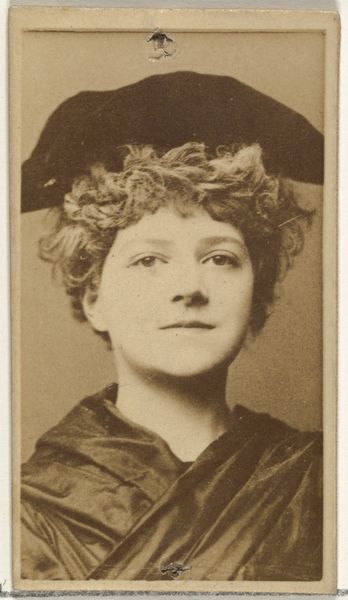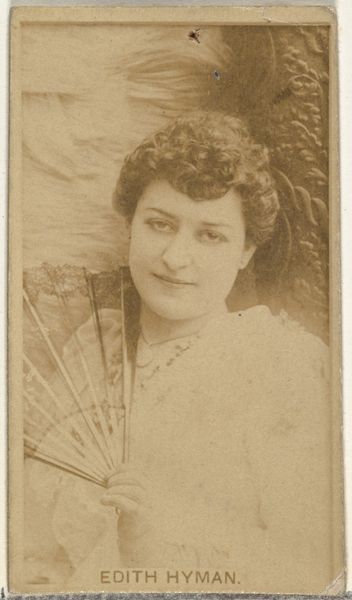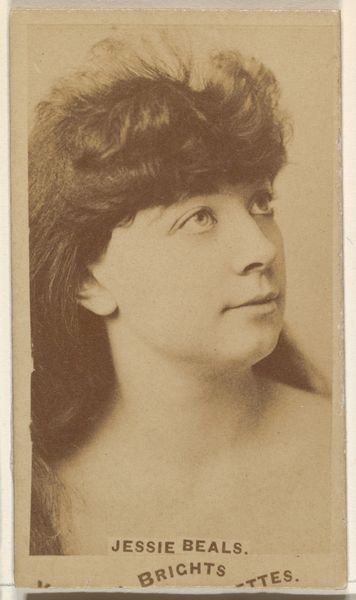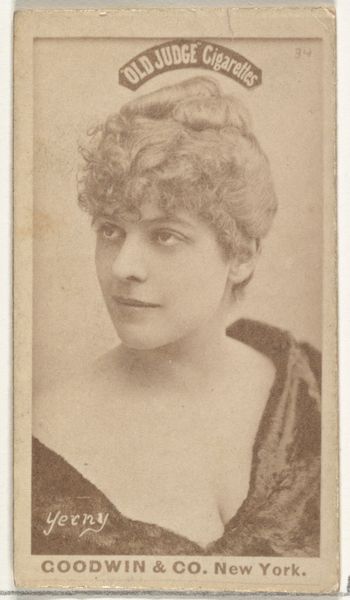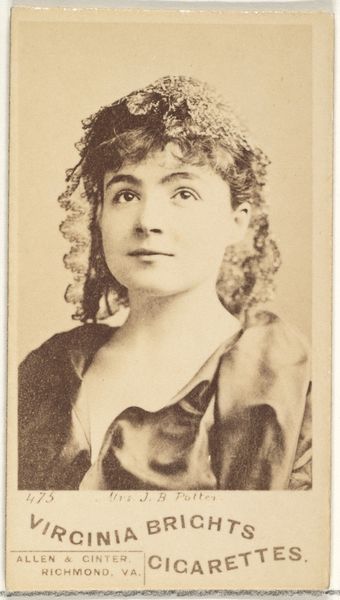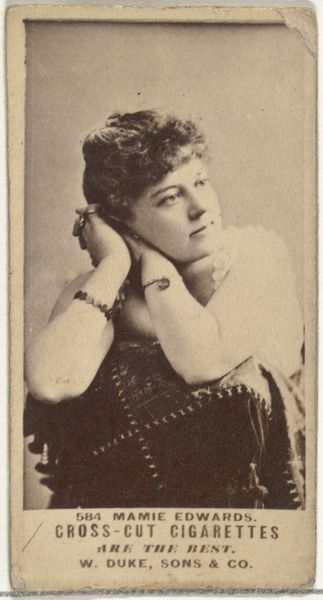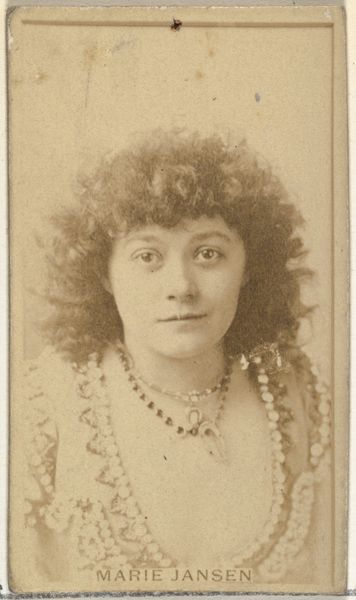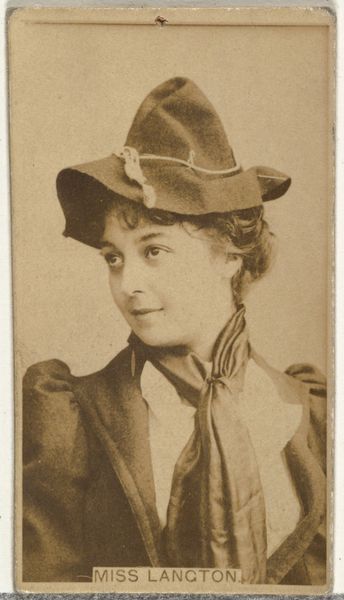
photography, gelatin-silver-print
#
character portrait
#
photo restoration
#
low key portrait
#
portrait image
#
portrait
#
portrait subject
#
photography
#
portrait reference
#
single portrait
#
gelatin-silver-print
#
portrait character photography
#
modernism
#
realism
#
celebrity portrait
Dimensions: image: 24.4 × 18.3 cm (9 5/8 × 7 3/16 in.) sheet: 25.3 × 20.1 cm (9 15/16 × 7 15/16 in.) mount: 56.5 × 45.6 cm (22 1/4 × 17 15/16 in.)
Copyright: National Gallery of Art: CC0 1.0
Curator: We are looking at Alfred Stieglitz's gelatin-silver print, "Katharine Dudley," created in 1922. What's your immediate reaction? Editor: The photograph exudes a quiet intensity. The subject's gaze is direct, yet there's a softness, almost vulnerability, conveyed through the gentle light and the way she rests her chin on her hand. It evokes a sense of introspection. Curator: Absolutely. The composition is crucial here. Note the tonal range of the gelatin-silver print—how Stieglitz manipulates light and shadow. See the subtle gradations that define the facial features. Editor: And beyond the technique, there's the undeniable presence of the sitter. Katharine Dudley was an editor, closely involved with journals such as ‘The Dial’ during a vibrant era of modernist thought. I am wondering what social contexts she and Stieglitz engaged with that might have shaped her demeanor for this sitting? Curator: Indeed, those biographical elements enhance our reading, but focusing on form, notice the spiral composition guiding our eye from the curls framing her face down to her supporting hand. The slightly diffused focus draws attention to the formal properties, like the textural contrasts between skin, hair, and dress. Editor: Well, thinking about the cultural context—the aftermath of the First World War, for example—does this portait reflect any cultural shifts of women, intellectual life, or modernist philosophies that the subject surely had a grasp on? The portrait has a sense of quiet fortitude that would imply a lot. Curator: It’s fascinating how you've interpreted Dudley's position. To me, her position reads with poise and control—especially in regards to photographic portraiture as a genre. We can decode that control through composition. Editor: Considering her profession, I would also love to dive into further study. Stieglitz’s portraits often transcend mere likeness, offering insight into the subject’s inner life and, sometimes, wider historical currents that speak volumes about social structures. Curator: This has deepened my appreciation for the artistic mastery at play. Seeing how various interpretations can coexist based on form and on sociocultural understanding only enriches it more. Editor: Precisely. It is about encouraging that cross-talk between what we see, what we know, and what we might ask.
Comments
No comments
Be the first to comment and join the conversation on the ultimate creative platform.
